Continuing our Flower Power series…..Spilanthes
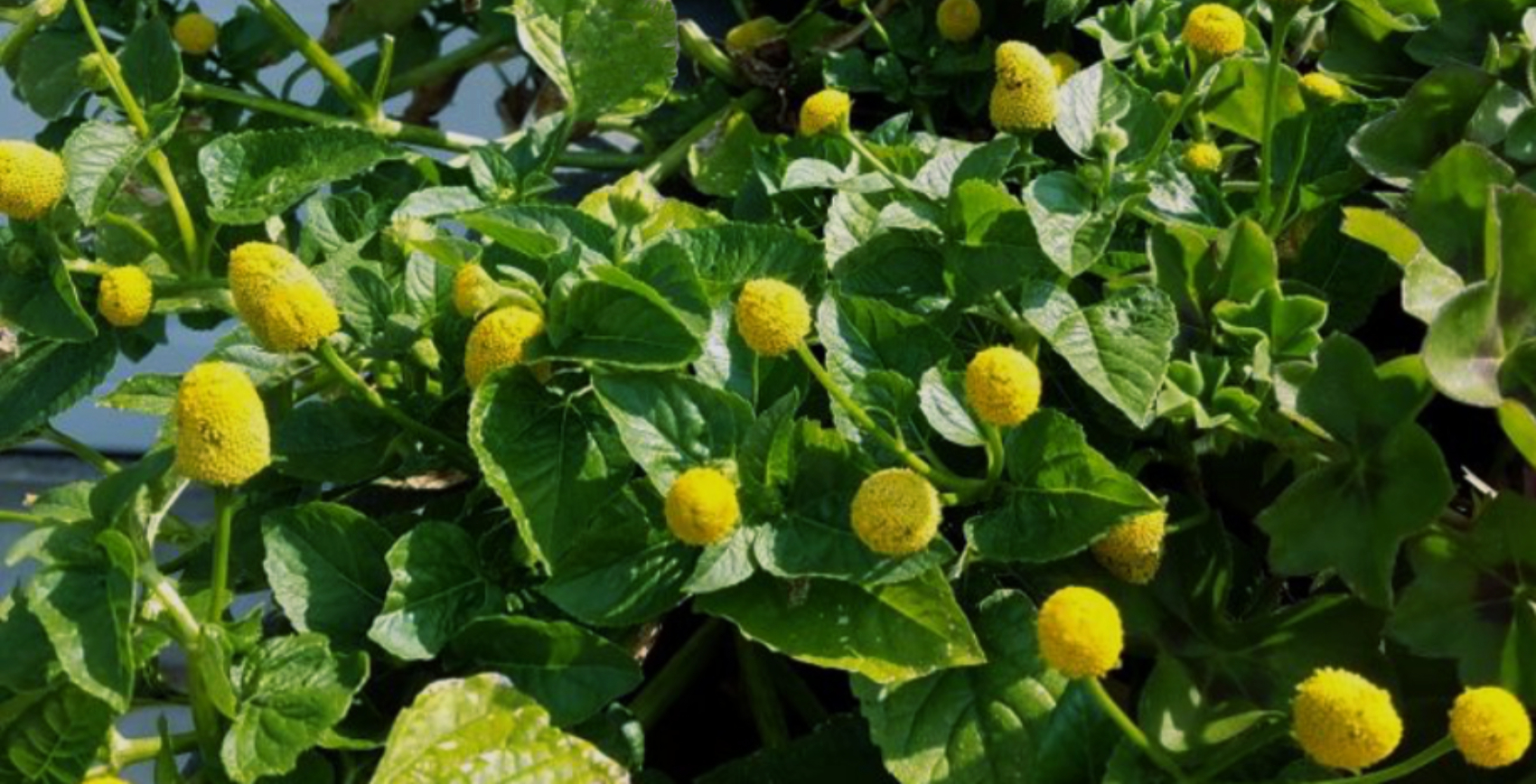
How would it be to live with Spilanthes?
Spilanthes is often seen as a “joyful herb” and a favorite of those who grow herbs for medicinal purposes. The entire plant, from root to flower, has medicinal value. Spilanthes (Acmella oleracea) is part of the daisy family (Asteraceae) but its unique appearance and zingy personality sparks curiosity and conversation.
Spilanthes is also called “Electric Daisy”, “Toothache Plant”, “Buzz Button” or “Eyeball Plant” and there are many more. One little nibble on a fresh flower causes a numbing or buzzing sensation in your mouth (note that the nibble should be tiny). Spilanthol is a major alkamide (a multifunctional bioactive agent) within the plant that is responsible for its unique sensorial effects. These effects include the ability to stimulate saliva production as well as numbing and tingling properties. This can provide temporary symptomatic relief from toothaches, something this little plant has become famous for.
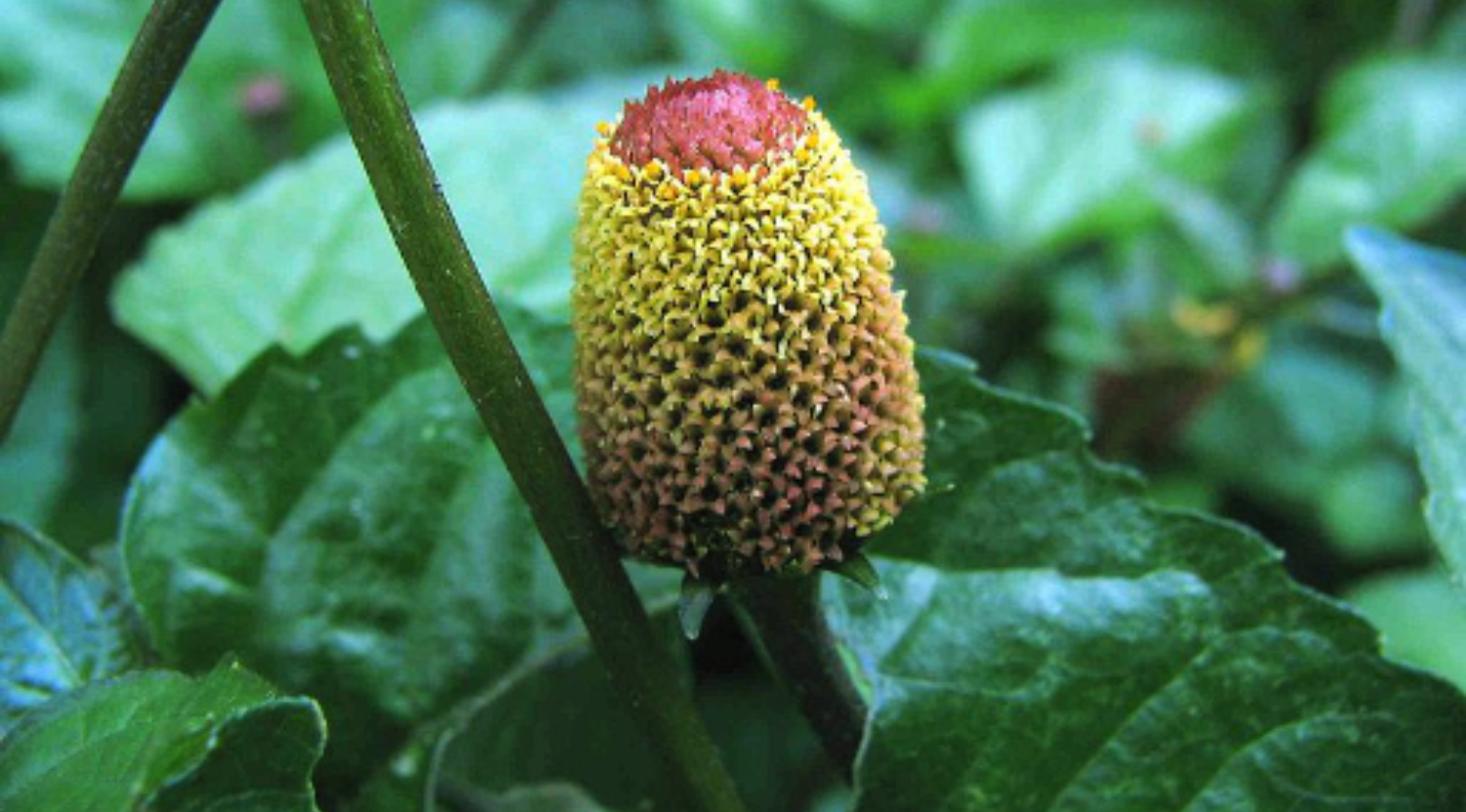
A little background…
As an herbaceous perennial in warm/tropical climates or an annual in cooler ones, Spilanthes is a low-growing, spreading herb which reaches about a foot high and one to two feet wide. It is native to tropical and subtropical countries such as India and South America but is now cultivated world wide. Spilanthes come in different varieties, some have the red eye in the center of the flower while others have canary-yellow blossoms.
Research shows that Spilanthes had widespread popularity in ancient tribal communities. It was prepared as a special food in religious festivals and was one of the 30 sacred plants offered by the poor in India for Dobur Uie rituals. African peoples use it for snake bite, people living in the Amazon traditionally chewed it for mouth, tooth and throat pain and Brazilians used it as an antibacterial.
Spilanthes is still a well-known plant in the Chinese and Indian traditional medicine systems, in Asia as well as most of South America. Current research shows the extract active in immune support plus it reduces inflammation in the same manner as drugs such as acetaminophen work. More recently a type of molecule within the plant has been isolated which shows promise in the inhibition of stomach ulcers.

Growing Spilanthes indoors…
According to herbalists, Spilanthes is among the easier of the medicinal herbs to grow. Spilanthes seeds usually germinate indoors in about 7-12 days at temperatures between 70-90 degrees F (try using peat pellets and a plant heat mat/heating pad). If you grow them in a container, make sure to regularly pot it up so the plant doesn’t get too cramped.
Spilanthes grows by expanding into new territory. It sends out branches which then take root. If you watch for these rootings, it is easy to cut them away from the main plant and propagate in a new container.
Although Spilanthes looks like a succulent, it does need more water than other medicinal plants. Putting more organic matter or a little clay into its potting soil can assist with water retention. They do not like to be soggy, but it is worse to let the container dry out.
Should you decide to grow Electric Daisies outdoors, they can be interplanted with other attractive medicinal plants such as lemongrass or artichoke. Although it is a rather small plant, rarely reaching over a foot tall, it self sows easily so you may want to watch it doesn’t overtake the area. Keeping the flowers deadheaded encourages more blooms.
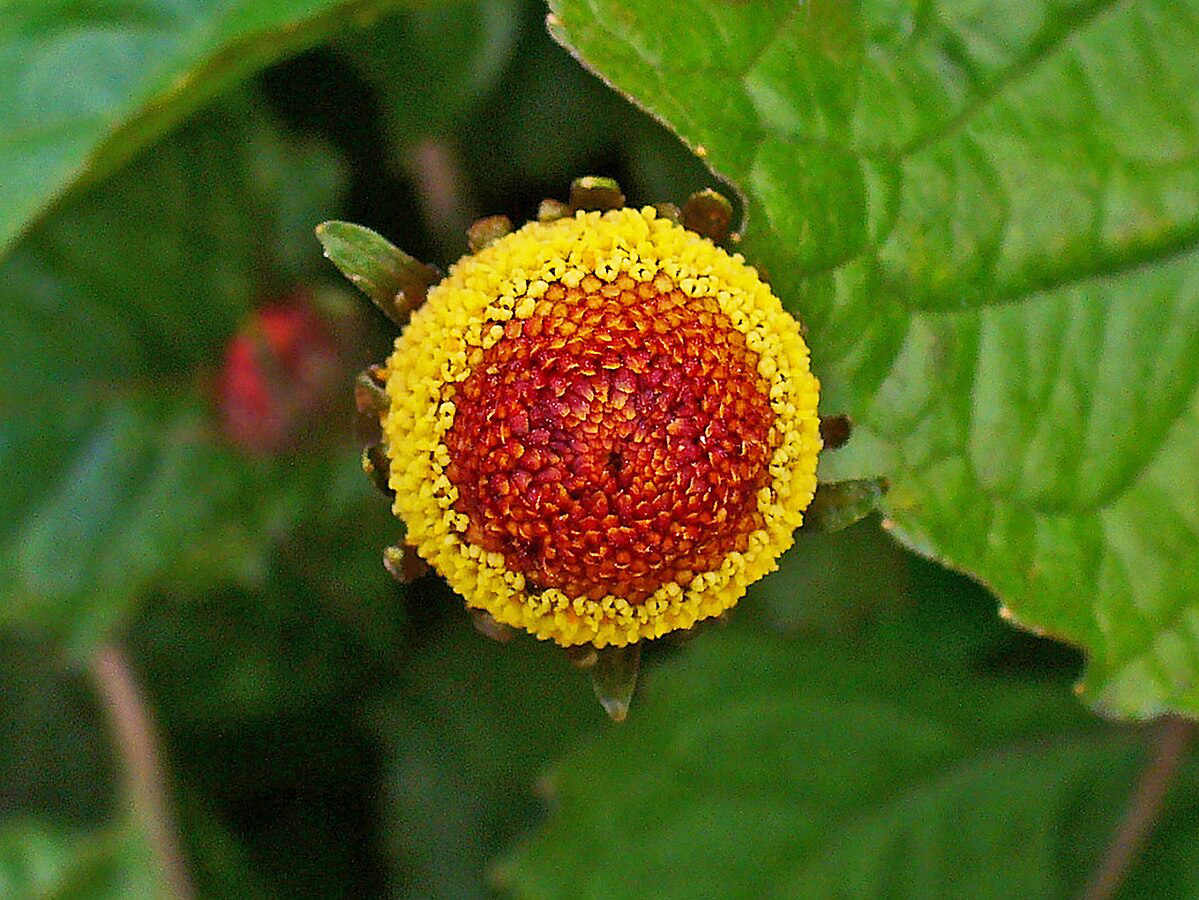
Harvesting:
The leaves and flowers are harvested when the plant is in full bloom, usually in the summer – but the leaves can be harvested any time once the plants are several inches tall. Harvest by simply snipping off the flowers, leaves and stems. Spilanthes give off a fresh scent that is almost citrusy. Those who have familiarity with using echinacea will find similarities, especially as they both stimulate the immune system.
Once harvested, extra Spilanthes flowers can be air dried in a dark, dry place with good air circulation. Or they can be frozen in an ice cube tray for smaller batches or bigger harvests on a large sheet to ensure they do not stick together.
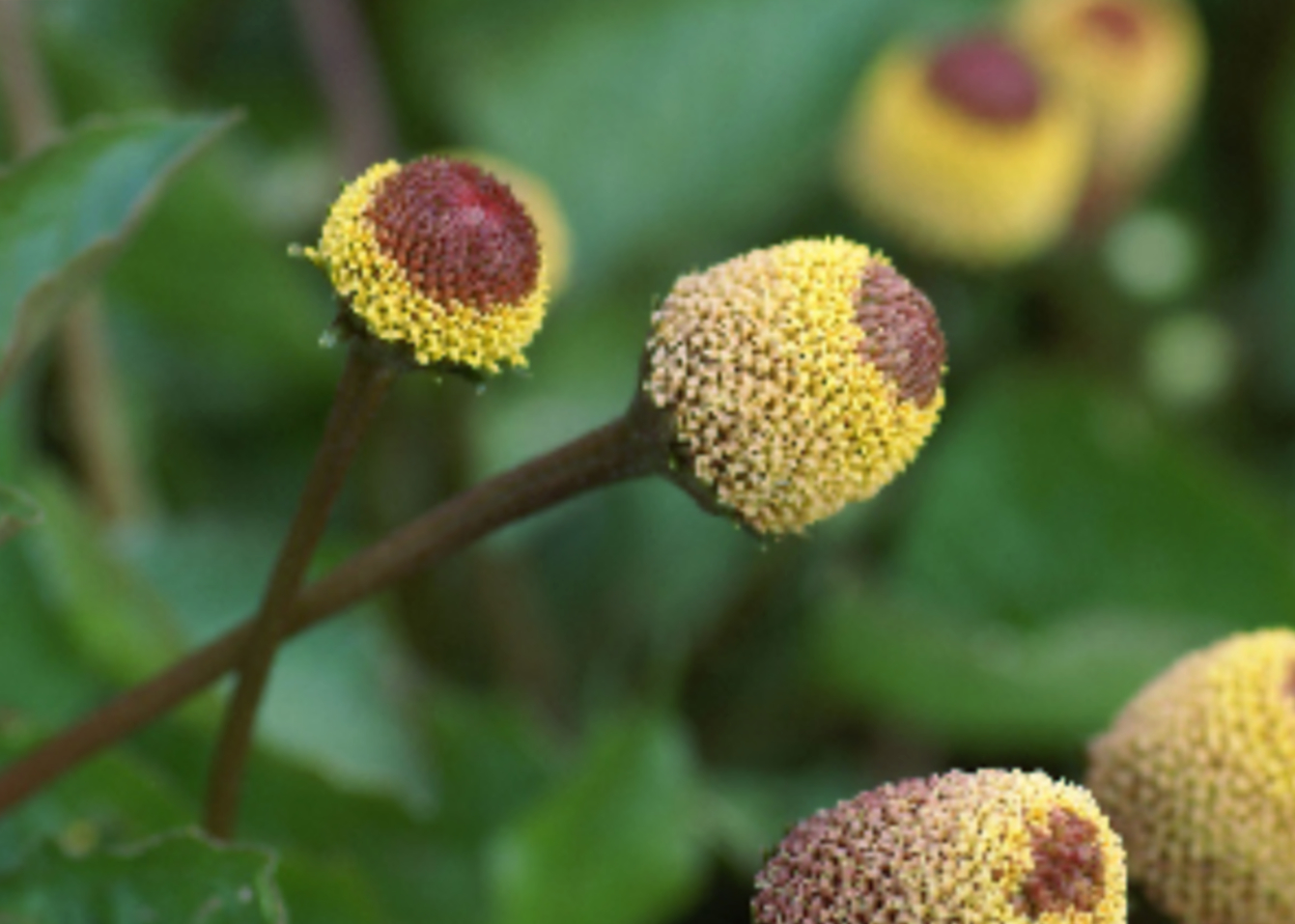
How to use Spilanthes:
If you decide to use Spilanthes rather than just enjoying the zany, cheerful company (and after checking with your health care practitioner, of course), there is are several ways to incorporate it into your life. The oil, called Jambu extract, is used in medicine and for flavoring food and chewing gum.
The highest concentration of the anesthetic effect is in the flowers. Always best used sparingly, the dried aerial portions can be ground into a powder for teeth to help temporarily numb the pain of insect stings or dental pain.
Tinctures can be made by soaking the flowers in alcohol for at least 6 weeks and diluted to suit your personal use such as using a drop in a tablespoon of water as a mouthwash or occasionally as a tea.
Spilanthes has grown popular as a cocktail garnish because of its electrical buzz effect in the mouth. In northern Brazil, Spilanthes leaves are shredded when fresh and added to salads for a subtle, but unique flavor. The taste of the plant doesn’t survive if it is cooked – so its primary culinary value is found in the high nutritional value and tingly effects.
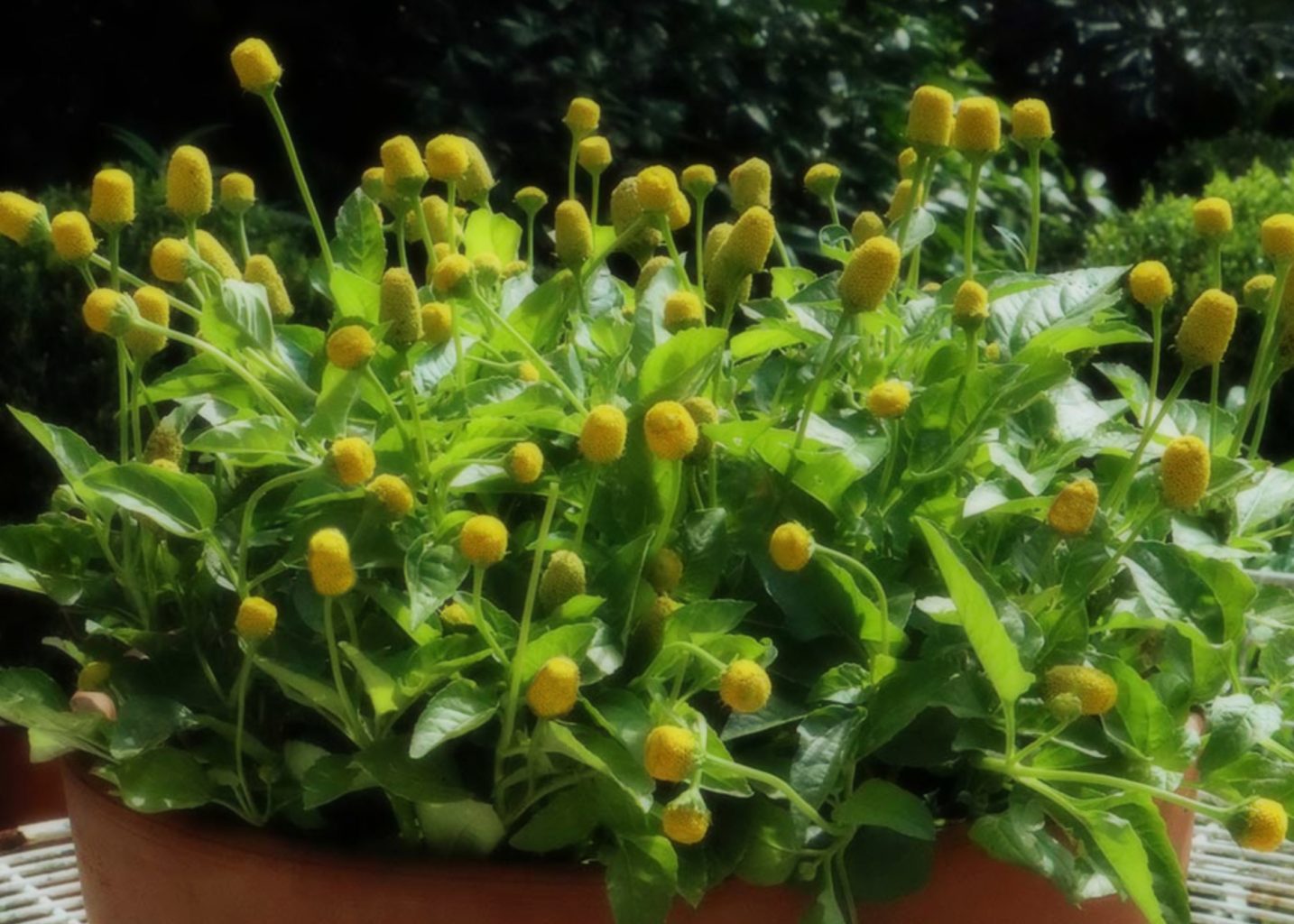
Growing Spilanthes, whether you intend to consume it or not, can be both fun and interesting. On the metaphysical level, it is seen as a stimulating, protective and vitality-producing herb within the domains of the Moon and Saturn.
Some believe Spilanthes teach others to be bold and clear about self-expression. If nothing else, a Spilanthes plant in your home, patio or garden could be, as one proud plant owner states, “a real funky addition”.
